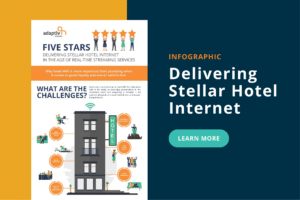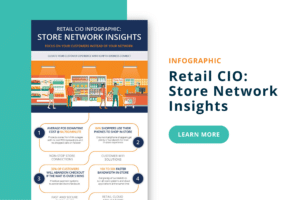Weighing the benefits of private Cloud connections and Cloud SD-WAN for a better Cloud experience.
The Era of Digital Transformation
In the age of digital transformation, businesses are rapidly migrating their services to the cloud. As more and more resources have left local servers to find their way online, the importance of seamless connectivity cannot be overstated. One has only to look at the number of Microsoft 365 users: Microsoft reported 382 million paid commercial seats in April 2023, and a 11% year-over-year growth[1]. That’s more than the entire population of the United States (336 million[2]), and definitely a faster growth rate (under 1%[3]).
Whether it’s leveraging private cloud environments for corporate services and applications, or embracing Software as a Service (SaaS) solutions like Microsoft 365 and Unified Communications as a Service (UCaaS) platforms like Teams, organizations are constantly seeking ways to enhance access and connectivity to the cloud.
This opportunity for further business wasn’t passed on by hyperscale Cloud providers such as Amazon and Microsoft.
Understanding Private Cloud Connections

Traditionally, solutions like Azure ExpressRoute and AWS Direct Connect have been championed as go-to options for achieving reliable and secure cloud connectivity. Azure ExpressRoute and AWS Direct Connect are dedicated network connections offered by their respective cloud providers, enabling enterprises to establish private, high-throughput connections between their on-premises infrastructure and the cloud. These solutions offer several benefits, including enhanced security, predictable performance, and reduced latency.
The Limitations to Private Cloud Connections
However, a closer examination reveals limitations and challenges that demand a more sophisticated approach. Despite their merits, private Cloud connections are not without their drawbacks. Firstly, they often entail vendor lock-in, tethering businesses to a specific cloud provider and limiting their flexibility to adapt to evolving needs or leverage Multi-Cloud environments (e.g. mix of AWS and/or Azure and/or Google Cloud Platform).
Additionally, these solutions predominantly benefit resources within their respective cloud ecosystems, offering limited advantages for accessing external resources or Multi-Cloud deployments. Considering that most businesses rely on a Multi-Cloud infrastructure, that poses a problem. Indeed, according to Flexera’s 2024 State of the Cloud Report[4], 89% of organizations rely on Multi-Cloud, as opposed to only 11% for single Cloud. And that’s without mentioning all those SaaS out there.
Furthermore, the complexity and cost associated with provisioning and managing dedicated connections can pose significant barriers for organizations, especially smaller enterprises with limited resources, especially as they require ongoing management for optimal performance.
And last, but not least, these types of connection do not provide organizations with inherent outage protection.
As high-throughput and low-latency as private Cloud connections may be, they remain a single point of failure as they do not offer any failover mechanisms.
An Alternate Approach: Network Optimization
More traditional solutions such as link balancing and SD-WAN (Software-Defined Wide Area Networking) offer a more neutral approach that aims to keep businesses connected in any circumstance. These solutions offer agnostic connectivity options, enabling enterprises to optimize network performance and reliability across diverse environments. However, while these technologies excel in enhancing connectivity for traditional workloads and applications, they often fall short when it comes to efficiently managing cloud traffic and workloads. The reason is that without a suitable endpoint to complete a tunnel, sessions leaving the LAN or WAN simply break out to the Internet.
Adaptiv Networks: A Bridge to the Cloud
Enter Adaptiv Networks Cloud SD-WAN, an ingenious solution designed to address the unique challenges of cloud connectivity with unmatched agility and performance. Unlike traditional solutions that are bound to specific cloud providers, or fail to provide true network resilience and quality, Adaptiv offers true vendor neutrality, empowering organizations to achieve peak performance, uptime, and quality of experience to all cloud and Internet resources. By leveraging a geographically distributed and redundant Cloud network, Adaptiv allows businesses to experience unbreakable cloud access, while significantly reducing latency and packet loss, and eliminating outages.
From seamless failover and load balancing to automated traffic prioritization and encryption, Adaptiv equips organizations with the tools they need to thrive in the cloud-first era.
And that’s without mentioning the built-in security features that come from adopting Adaptiv SD-WAN, or its Cloud security suite.
Moreover, Adaptiv’s subscription-based model and intuitive management interface make it accessible to organizations of all sizes, eliminating the barriers to entry associated with traditional connectivity solutions. Whether it’s enabling remote workforces, supporting mission-critical applications, or facilitating digital innovation, Adaptiv empowers organizations to embrace the cloud with confidence and agility.
Embracing the Future of Cloud Connectivity
In conclusion, as businesses continue to embark on their journey of digital transformation, the need for reliable, agile, and vendor-neutral cloud connectivity has never been greater. While private Cloud connectivity solutions like Azure ExpressRoute and AWS Direct Connect certainly serve a purpose in enhancing cloud connectivity, their limitations underscore the necessity for a more sophisticated approach.
At the end of the day, what matters is what’s more critical to your business; if all your mission critical services are limited to either Microsoft or Amazon, and you’re not too sensitive to network outages, then private Cloud connections may be a right fit.
But if your applications span a variety of Cloud environments, on-premise servers and beyond, or if your business requires always-on Internet access, then Adaptiv is a better investment for you.
With its cloud-centric architecture, vendor neutrality, and advanced capabilities, the Adaptiv SD-WAN Cloud emerges as the optimal solution for organizations seeking to unlock the full potential of the Cloud. By embracing Adaptiv, businesses can navigate the complexities of the cloud landscape with confidence, agility, and unparalleled performance, positioning themselves for success in the digital age and beyond.
Learn more at adaptiv-networks.com.
 Sébastien Tellier is the VP of Solutions at Adaptiv Networks. Prior to joining Adaptiv, Sébastien worked at Martello and ELFIQ Networks, where he held different positions in marketing and sales in the SD-WAN market. During that time, he appeared on panels and shows in Europe and North America, while working with channel partners across the planet. Sébastien holds a Master of Science in Marketing from HEC Montréal.
Sébastien Tellier is the VP of Solutions at Adaptiv Networks. Prior to joining Adaptiv, Sébastien worked at Martello and ELFIQ Networks, where he held different positions in marketing and sales in the SD-WAN market. During that time, he appeared on panels and shows in Europe and North America, while working with channel partners across the planet. Sébastien holds a Master of Science in Marketing from HEC Montréal.[1] Microsoft, Microsoft Fiscal Year 2023 Third Quarter Earnings Conference Call, https://www.microsoft.com/en-us/Investor/events/FY-2023/earnings-fy-2023-q3.aspx
[2] U.S. Census Bureau, U.S. and World Population Clock, https://www.census.gov/popclock/, accessed on May 07, 2024.
[3] U.S. Census Bureau, U.S. Population Trends Return to Pre-Pandemic Norms as More States Gain Population, https://www.census.gov/newsroom/press-releases/2023/population-trends-return-to-pre-pandemic-norms.html
[4] Flexera, 2024 State of the Cloud Report, https://info.flexera.com/CM-REPORT-State-of-the-Cloud.









